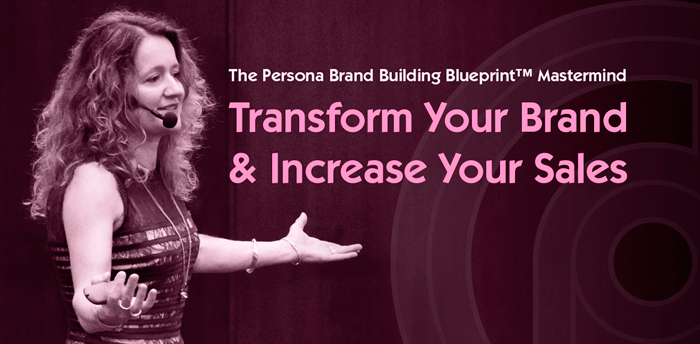Brand Loyalty: 5 Key Steps to Building Your Loyal Fan Base
“80% of your company’s future revenue will come from just 20% of your existing customers” according to Gartner Group.[1] This means that brands need to devote more attention to building a loyal customer base, and in order to do this successfully they must inspire trust.
Given the number of recent scandals relating to brand ‘dishonesty, and the incredible ease with which the average consumer now acquires information online, it’s easy to see why trust has become such an important value. While many brands strive to inspire loyalty, and in the process develop their ‘customer’ brand champions, very few manage to do this consistently really well.
Here we take a look at the primary benefits of developing a loyal customer base, and some of the most effective brand strategies to do so, together with examples of brands who’ve managed to consistently inspire loyalty amongst their customers.
The 4 Key Benefits of Having Loyal Brand Fans
1. Free Fan-Made Commercials and Other User-Generated Content
Loyal fans will often provide ample content for the brand they love, and this can be anything from testimonials and reviews, up to a commercial with high quality production values. Tesla, the leading electric car brand on the market, is an excellent example of how talented fans can contribute to a brand’s marketing strategy. Elon Musk has always had a notably different approach to marketing compared a lot of his competition, and in the process has managed to build a veritable army of loyal brand ambassadors.

Image via www.tesla.com
A talented fan has even made a beautiful commercial, and this is not the first time something like this has happened – two years ago some fans from Evergeen Pictures filmed a heart-warming commercial likening Tesla’s product to a “modern spaceship”.
In both these cases, the fans were purely motivated by their love of the brand, or rather, what the brand stood for.
2. Loyal Customers can Help Your Brand Adapt and Survive
It’s a given that loyal customers are the backbone of any successful brand. If a brand authentically delivers on its promise consistently its more likely to be forgiven when the occasional hiccup occurs.
The revival of the Hydrox brand is a good example of how consumers will often remain loyal to the brand for decades, help it adapt to the times, and even help resurrect a brand that was near the brink of extinction.
Hydrox was actually the first cookie to feature a sandwich-type offering, with two thin chocolate cookies cushioning a creamy centre, despite the fact that most people in the world now associate this type of cookie with the Oreos brand. Hydrox had trouble effectively marketing their product over the years, and Oreos took the lion’s share of the market, but helped by a number of extremely loyal fans fuelled by nostalgia, they managed to apply a successful brand revitalisation strategy.

Image via www.leafbrands.com
In fact, they were going back to their roots and using the old recipe, so they needed help from their fans who still remembered that signature taste. Some consumers even had decade-old packages in their freezers, which they donated for use in taste tests. That level of loyalty is what keeps a company in business during periods of uncertainty. The question here is, what are you consistently doing with your brand to inspire devoted brand fans?
3. Loyal Customers Engage in Word-of-Mouth Advertising and Give Referrals
Word-of-mouth advertising is probably the oldest form of marketing known to man, but it has immense power even today, as witnessed by the success of Coconut Bliss. It started out as a small ice cream company with simple core values – they offered dairy-free organic ice cream, with coconut milk as the main ingredient. Their first customers were friends, then friends of friends, and, eventually, thousands of people from all around the country.
It was their personal approach to marketing, and that core of loyal consumers that quickly led to significant growth. Most of this initial growth was due to word-of-mouth advertising and referrals from very impressed consumers. Loyal customers tend to be quite vocal about their preferences, and are one of the best sources of referrals.
4. Loyal Fans are Less Likely to be Influenced by Your Competitors
When customers become emotionally engaged and start feeling like they are as much a part of the brand itself as they are consumers, a tribe mentality is born, which makes your loyal fans less susceptible to competitors’ marketing efforts. This can be seen in famous brand rivalries like Apple vs. Microsoft or Coca Cola vs. Pepsi, where customers who choose one brand over the other exhibit fanatical or cult like levels of devotion.
The 5 Proven Strategies for Inspiring Brand Advocacy
1. Create an Antagonist
Some of the most successful brands in recent history have managed to build a veritable army of loyal fans by demonizing the competition or providing their audience with a common “enemy” to fight against. Apple and Tesla are good examples of this. In Apple’s case, it was a sense of elitism that helped them rally a core following of loyal fans under their banner. People who placed their trust in the brand eschewed Apple’s main rival, Microsoft, and even showed disdain for the competition and their “followers”.
Tesla took a somewhat different approach, focusing on the eco-friendly aspect of electric cars, which motivated consumers to take a stand against cars powered by fossil fuels. Tesla was painted as a green, caring and technologically innovative brand. Their route to market was also different and disruptive, yet very much liked by their customers, compared to the more traditional ‘car dealership’ business model. They soon became a brave underdog in the eyes of the public, a car brand with sound moral and ethical values, and one that symbolised progress.[2]
By developing distinguishing factors which are emotionally engaging between two groups, you can effectively inspire not only loyalty towards your group, but also abject disdain for the other group. This all harkens back to research performed by psychologist Henri Tajfel, which has inspired many an entrepreneur to utilise social identity theory to their advantage.
2. Establish Effective Two-Way Communication on Social Media
By solely posting promotional content on social media, you fail to utilise the full potential of this powerful tool. Listening to what the consumers have to say and engaging them in conversations allows brands to perform effective market research and enhance customer experience, but most importantly, it helps establish personal connections.
Companies like Nike, Starbucks and Xbox have effectively used social media for both promotion, and as a means of enhancing the quality of their customer service.[3]
Nike and Xbox both have two separate accounts on Twitter, each with its own distinct purpose: a main account used for providing users with updates and for promotional purposes, and another dedicated solely to customer support. The alternate account allows consumers to ask questions or voice their complaints, and a dedicated team responds to all inquiries in a timely fashion. This inspires trust, helps resolve issues quickly and makes customers feel respected and appreciated.

As we have seen with celebrities like Kim Kardashian, who took social media by storm, it is also important to build a strong online presence on a number of different networks. Ms Kardashian is active on a number of social media networks, and posts diverse content on a regular basis. These accounts are populated with content related to all the different aspects of her brand personality – from fashion, to fitness and pregnancy topics. People can find updates about her daily life, beauty product reviews, and hear her opinions on current affairs and pop culture news.
As of late, a number of celebrities, including Howard Stern and Lady Gaga, have focused on creating unique media hubs for their brands.[4] These hubs are essentially websites, valuable brand assets controlled by the brand, that offer a behind-the-scenes look into their lives and allow these celebrities to post a large amount of exclusive brand collateral content, including videos, images, updates, guides, etc. Owning a unique platform like this enables brands to communicate with their consumers in a very direct manner.
3. Inspire Word-of-Mouth Marketing by Improving Customer Experience
A good way for a brand to differentiate itself is go above and beyond when it comes to providing the best customer experience. No one is perfect, small problems occur all the time, and customers can sometimes have complicated questions and unusual requests.
However, if you can effectively address all inquiries, and go beyond the call of duty when it comes to making your customer happy, you will gradually build a solid brand reputation with a strong customer base of brand ambassadors. Zappos is a great example of how a brand that focuses on exceptional customer experience and word-of-mouth marketing can become incredibly successful.
Of course, user experience is strongly influenced by the quality of your customer support, so your brand needs to invest in this aspect as well. Customers love to share stories of good customer service experiences on social media.
4. Make an Emotional Connection by Developing and Leveraging a Strong Brand Personality Relevant to Your Primary Customer
When we talk about your brand personality this is about developing the overall characteristics of your brand, what it stands for and the way it expresses itself through using a process called brand profiling. In conjunction with this overall concept you can also develop an actual character that expresses your ‘core brand personality, characteristics and values’ by using a character that’s representative of your brand.
Quaker Oats had great success promoting their Cap’n Crunch brand online several years ago, and it was in part due to their consistency in portraying the Cap’n. His unique personality and vocabulary were a relatable extension of the brand used to express of the overall brand characteristics and values, and all faithfully represented in every Tweet. [5]
The Quaker Oats social media team did a good job of consistently staying ‘in character’ using a ‘brand voice’ that appropriately expressed their brand, and the mascot of their brand in the form of Cap’n Crunch, all of which regularly engaged their followers successfully. They provided insights into their mascot character’s past, asked and answered questions, and even had some fun during the “International Talk like a Pirate Day” by voicing Crunch’s disdain for pirates.

This strategy enabled their brand to stay relevant, accumulate over 40,000 followers on Twitter, and connect with their audience on an emotional level. Past research has shown that consumers who feel a strong emotional connection to a brand are far more likely to develop a high level of trust in the brand, which leads to long-term commitment.
One of our key objectives when working with our clients is to develop a deep rooted understanding of their customers, particularly in terms of their needs, wants, loves, hates and aspirations using tools such as brand audit health checks, research and buyer personas. It’s only when you really understand your primary audience that you can develop a solution that meets and exceeds their needs emotionally, functionally and rationally. If you don’t address all these key ingredients through your brand profiling, brand strategy and brand collateral you’re unlikely to succeed long term or achieve the necessary brand loyalty required for your brand growth and success.
5. Reach out to Influencers
Influencers with a large active social media following can become incredibly potent brand ambassadors, as their audience places great trust in their opinion. In fact, research has shown that an astounding 92% of consumers focus primarily on referrals coming from someone they know, and in 81% of cases these referrals where found on the web. A few lines of text praising your brand from a social media influencer with a large and loyal following can garner a lot of positive attention. In a sense, reaching out to an influencer can be likened to hiring a spokesperson who is willing to work pro bono. However, in addition to having a reputable voice to spread the word about your company, back and forth communication with influencers enables a brand to convey genuine authenticity.

Image via www.blogkissmetrics.com
When an audience knows that the ‘spokes’ person, be it an actress or a renowned blogger, isn’t motivated by financial gain, the brand mentions and endorsements on social media are a lot more natural and respected. We can turn to Cap’n Crunch for some excellent advice once more – when famous rapper Ice T tweeted about having the Quaker Oats cereal for breakfast, the Cap’n immediately responded by thanking him for choosing “his” cereal and showing support.
This, in turn, lead to another tweet from Ice T, where he expressed his excitement about being contacted by the Cap’n himself, which was retweeted a large number of times by both the rapper’s and the brand’s followers. Something as simple as this can generate a good deal of social media buzz, and help a brand earn some additional credibility and acquire new customers.
However, you do need a comprehensive brand strategy when reaching out to influencers, so feel free to utilise some of the basic tips outlined in the video bellow and give us a call or drop us a line.
You might also like:
• Rebranding Strategy: Why Your Rebrand Must Embrace Storytelling
• Brand Profiling: Top 6 Components to Creating a Strong Brand Personality
• Brand Sponsorships: The Best Brand Ambassadors Are Already On Your Payroll
• Brand Management: Top 10 Tips for Managing Your Brand Reputation
• Brand Differentiation: 30 Ways to Differentiate Your Brand
• Brand Voice: Differentiating Through Your Own Brand Language and Attitude
• Humanizing Your Brand : Why It is Key to Commercial Success
So, what do you think?
• Have you developed and leveraged a strong brand personality that stands out or a clear antagonist?
• Is your brand approachable on social media and do you answer your customers questions?
• Have you identified what really matters to your customers and what’s your brand doing to create an emotional connection with your target audience? Do you need to give your brand a health check on its performance?
• Have you identified who would be relevant influencers within your brand sphere and made an effort to reach out to those influencers to build social connections?
[1] Alex Lawrence, Forbes, Five Customer Retention Tips for Entrepreneurs, November 2012
[2] Tamara Rutter, USA Today, “Why Tesla has the most loyal customers”, September 2014
[3] Brittney Helmrich, Businessnewsdaily.com, “10 Companies That Totally Rock Customer Service on Social Media”, December 2014
[4] Brooks Barnes, nytimes.com, “Coming Soon: Celebrity Web Networks From the Media Company Whalerock”, February 2015
[5] Socialmedia.org, Quaker Oats: Hitting the High Seas of Social Media, presented by Barbara Liss, September 2011, https://vimeo.com/29063976













































